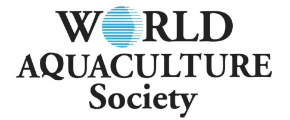AUTOMATED TOOLS FOR DETECTING ENTANGLEMENT RISKS ASSOCIATED WITH AQUACULTURE
Risk of entanglements inherent in aquaculture installations creates a critical roadblock for many interested parties seeking to obtain aquaculture permits in the U.S., particularly as we push further off-shore in to Federal waters. Currently, the only monitoring tools available are basic sensors and cameras, but monitoring these data streams 24/7 is not feasible as the cost of 24-hour staffing to monitor a farm site is prohibitively expensive and, in many cases, practically infeasible. And while passive sensing may be capable of alerting farm managers to an active crisis, there is nothing that could help them prevent a crisis before it occurred. For unmanned farm sites located miles offshore, early detection and mitigation of entanglement risk could provide deeply valuable protection. Most of the entanglement events that could occur at aquaculture installations remain unknown to the operators absent a human site visit; and animals that become entangled stand very little chance of surviving or escaping and may cause considerable damage to equipment.
Working with the National Oceanic and Atmospheric Administration (NOAA), we are developing and deploying technology that can sense animals likely to become entangled and deter them, and immediately alert farmers. If an entanglement has occurred, the farmers can take a very rapid, specific action in response (as opposed to physically visiting the site, discovering a problem and having to make a return trip to the site to resolve it). In addition to protecting marine mammals and other species of concern, this system can potentially prevent damage to equipment, escape events, and the tremendous time and expense to operators incurred while resolving entanglements. Providing farmers with a tool to reliably and affordably avoid and cope with animal entanglements will significantly improve success rates of permit applications and allow for increased growth of U.S. aquaculture. Potential users of this technology will be aquaculture producers who have a need for farm-side monitoring that can alert them to events that threaten their crops and/or equipment. Research institutions may also require such equipment to protect experimental farms and research installations.
We introduce a Computer Vision and Machine Learning (CV/ML) methodology to detect and respond to entanglement risks specifically associated with aquaculture operations in coastal or offshore environments (e.g. entanglements of offshore marine aquaculture systems and gear with marine mammals and turtles, or other species of concern). The system will use a suite of modern sensors to observe areas in and around a marine aquaculture facility. This sensor data is processed using advanced computer vision and machine learning-based methods, and when an endangered marine animal is detected, a warning system is triggered to help guide the animal away from the area and prevent a potentially deadly entanglement event.













